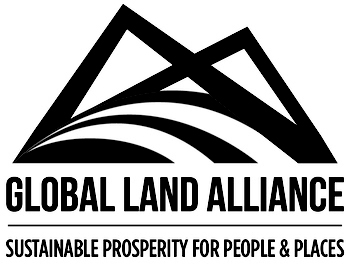1. There are more people living in East Asia and the Pacific that feel insecure than in any other region
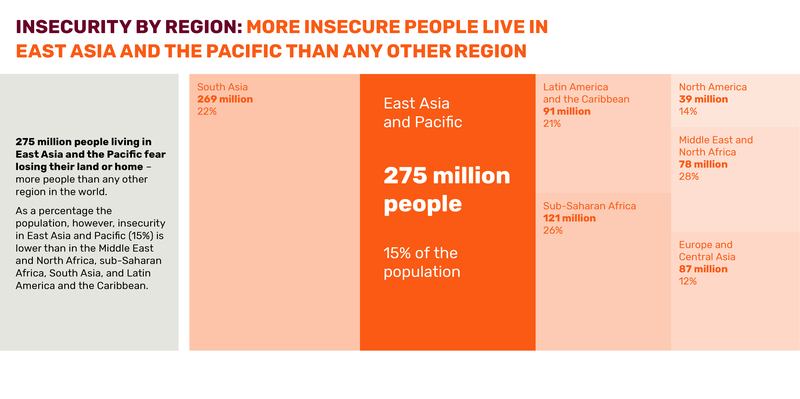
The populous region is home to more people who feel insecure than any other: an estimated 275 million people feel it is likely or very likely that they will be pushed off their land or lose their home in the next five years. As a proportion of the population, however, insecurity in East Asia and the Pacific is actually lower than in the Middle East and North Africa, sub-Saharan Africa, South Asia, and Latin America and the Caribbean.
2. Levels of insecurity vary widely in the region
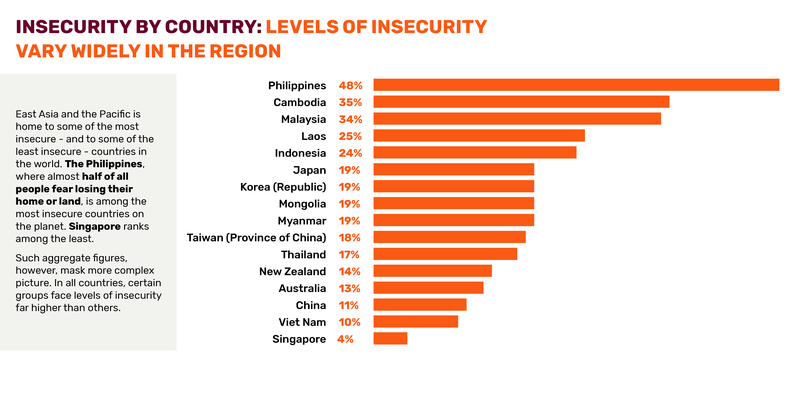
The region is home to some of the most insecure countries in the world – and some of the least. Nearly half of all adults living in the Philippines fear losing their home or land, twelve times the rate in Singapore, where 4% of people feel insecure. But such top line figures don’t tell the full story. The data also reveal that, across all countries, certain groups face far higher levels of insecurity than others.
3. Renters are far more likely than owners to feel insecure
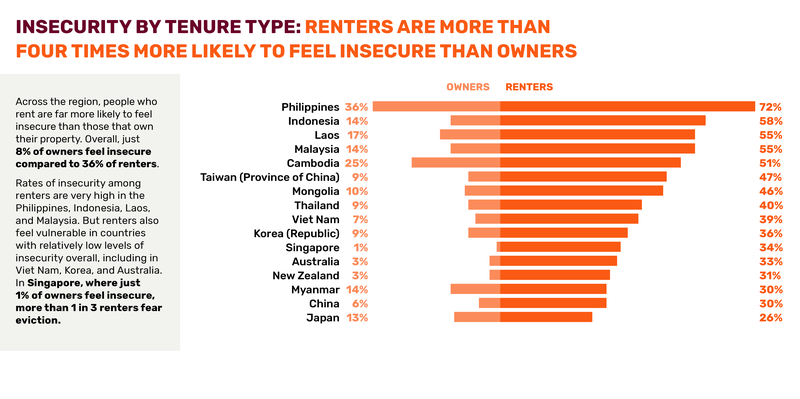
A much higher proportion of renters feel insecure than owners. This finding persists across countries with high levels of overall insecurity as well as those with relatively lower levels. In China, people who rent are five times more likely to feel insecure than those who own. In Australia, renters are ten times as likely!
4. Young people are particularly vulnerable
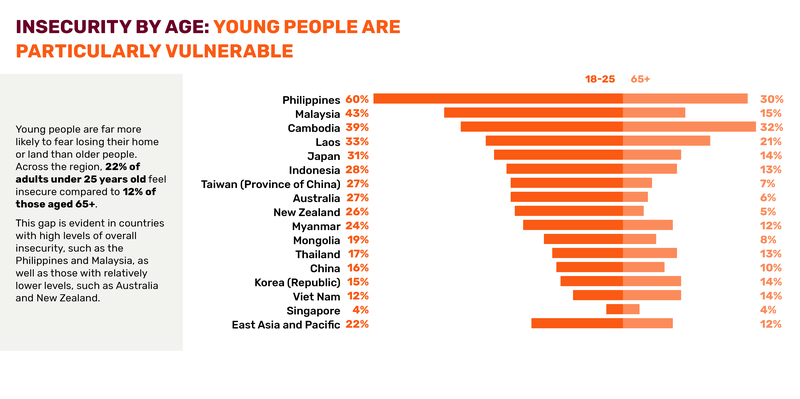
Young adults in the region are more likely to feel insecure than older people: 22% of those under 25 years old feel insecure compared to 12% of those over 65. Yet this varies from country to country: the gap is relatively wide in Malaysia and New Zealand; but is small to non-existent in China, South Korea, and Singapore. In Viet Nam, a slightly higher proportion of older people than younger people feel insecure.
5. The gap in perceived insecurity between high- and low-income groups is wider in wealthier countries
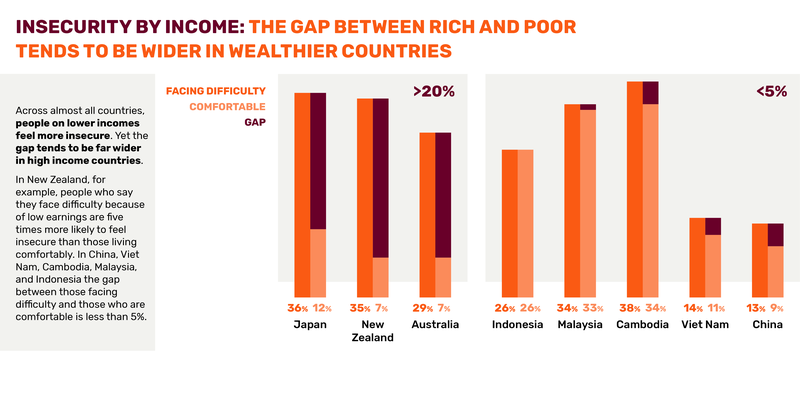
People facing difficulty in terms of their income are more likely to be insecure than those who are comfortable. Yet gaps in the levels of insecurity between high- and low-income groups tend to be much wider in high-income countries than middle-income countries.
In Japan, for example, people facing difficulty due to low earnings are three times as likely to feel insecure as those that are comfortable. Other the other hand, in Cambodia, Malaysia, and Indonesia the difference in less than 5%.

